Snakes are limbless reptiles and one of the many toxin-producing animals known to man. Because of this, snakes prey on animals that many other animals larger than them cannot prey on. It is commonly said that snakes are carnivores and feed on other animals — but is this true? Are there any snakes that eat plants? What surprising foods do they eat? Find out in this article.
Are Snakes Carnivores?
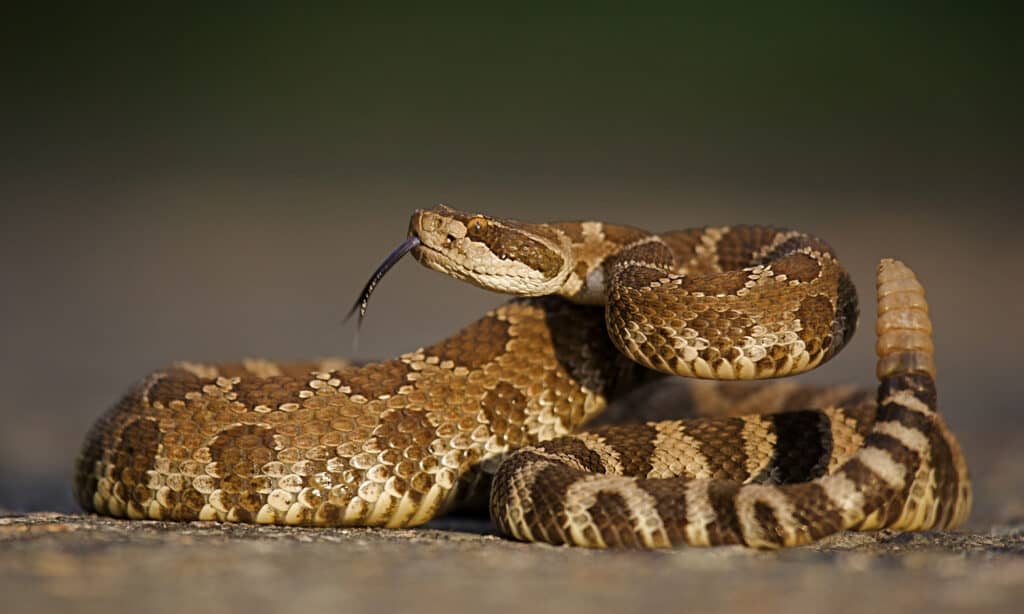
Snakes, like king cobras and coral snakes, eat other snakes of the same species.
©Tom Reichner/Shutterstock.com
A carnivore eats other animals, and since snakes only feed on other living creatures, they are carnivores. They are actually obligate carnivores, meaning they cannot survive on anything other than other living creatures.
Much like our house cats are obligate carnivores, snakes need the nutrients that only raw food provides. You could call some of them cannibals, because there are cannibalistic tendencies within some species. However, they’re still eating meat.
Are There Any Omnivorous Snakes?
Omnivorous animals feed on animals and plants, just like humans. Currently, no snake is known to feed on plants and animals.
Are There Any Herbivorous Snakes?
Herbivorous animals are animals that feed strictly on plants, such as cows. No snake is known to eat plants or follow a herbivorous diet.
Surprising Foods That Snakes Eat
We’ve established that snakes are carnivores. Most snakes feed on rodents, amphibians such as frogs, toads, and other small mammals. However, snakes eat some pretty unusual things, which we will look at below.
Porcupine
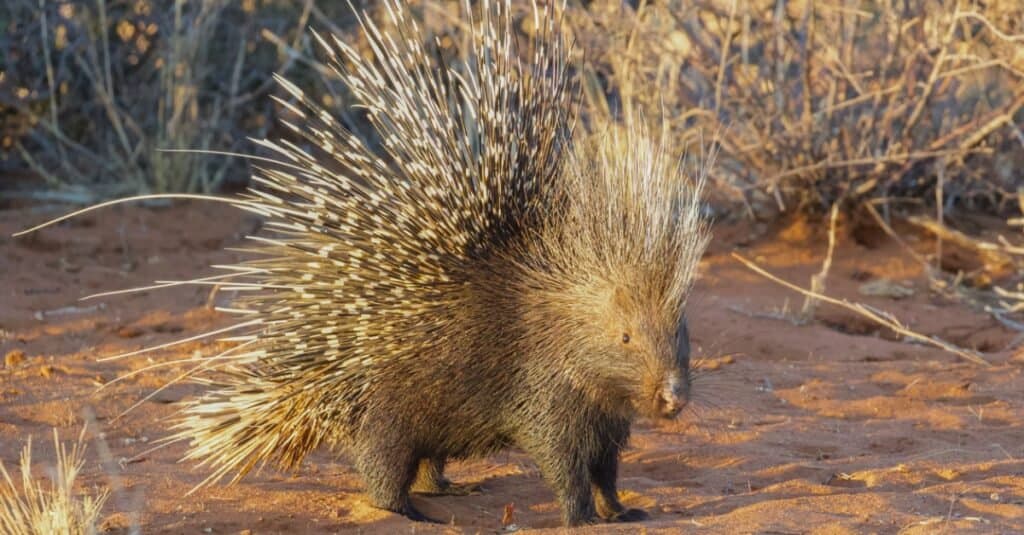
The quills of a porcupine can cause the death of a
lion
.
©iStock.com/Pedro Ferreira do Amaral
If you’re thinking of the mammals with sharp and pointy spikes, you’re right; snakes do eat porcupines. Large-sized snakes often attack and eat porcupines. Their stomach acids help break down the sharp quills, and the animal is safely digested.
However, it is important to note that snakes aren’t always successful in this effort. If a snake attacks a large-sized porcupine, while it may succeed in killing the porcupine, it might not be able to digest it due to the size of the quills. In many cases, the quills end up piercing the snake’s internal organs and killing it.
One such incident occurred in South Africa in 2015, as reported by NDTV; a large python died trying to swallow a porcupine. Experts stated that it was likely that the porcupine’s spikes had pierced the snake’s digestive tract and killed it.
Monkey

Some monkey species, such as the wild capuchin monkey, are known to prey on snakes.
©Ondrej Prosicky/Shutterstock.com
Although snakes aren’t known to specialize in killing any primates, they occasionally catch monkeys. This is shocking, considering that monkeys are smart and can run at a speed of 35 miles per hour. However, some species of monkeys also prey on snakes. The wild capuchin monkey (Sapajus libidinosus), for example, is known to hunt, kill, and eat snakes.
However, on 16 September 2017, a research paper titled “Food or threat? Wild capuchin monkeys (Sapajus libidinosus) as both predators and prey of snakes” was published. It showed that wild capuchin monkeys can differentiate between venomous and nonvenomous snakes. They also showed fear of constrictors, showing that they knew just how dangerous various snakes were.
Goats
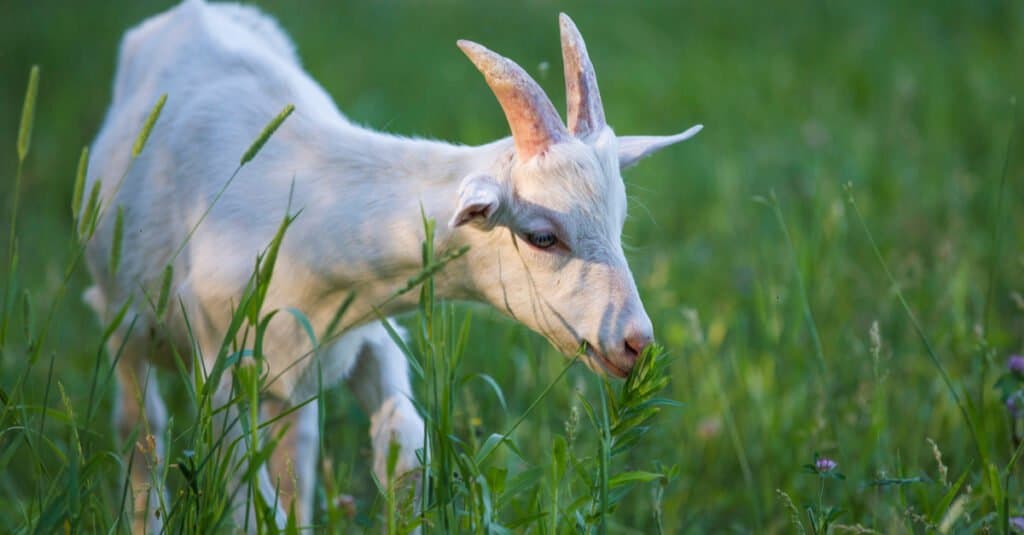
Snakes sometimes prey on goats.
©Mircea Costina/Shutterstock.com
Goats are large, plant-eating animals. However, despite how much larger they are than snakes, they are frequent prey for snakes. Both constricting and venomous snakes kill and feed on goats, and they can do this due to their unique anatomies.
Snakes have unique skull bones, ligaments, and mandibles. Each mandible is attached to the back of the skull by a stretchy ligament. This allows them to open their mouths to incredible widths and swallow large animals like goats.
Snakes that eat goats are some of the largest in the world. Your typical boa constrictor could not do it, although a very, very large boa might be able to eat a baby goat. Only a few species, like anacondas, reticulated pythons, and Burmese pythons could manage an adult goat, but even that is probably pushing it. They do this either by constriction or venom, depending on the snake’s species. Next, they swallow the goats headfirst. Typically, snakes swallow their food head-first, but sometimes they don’t.
Kangaroos
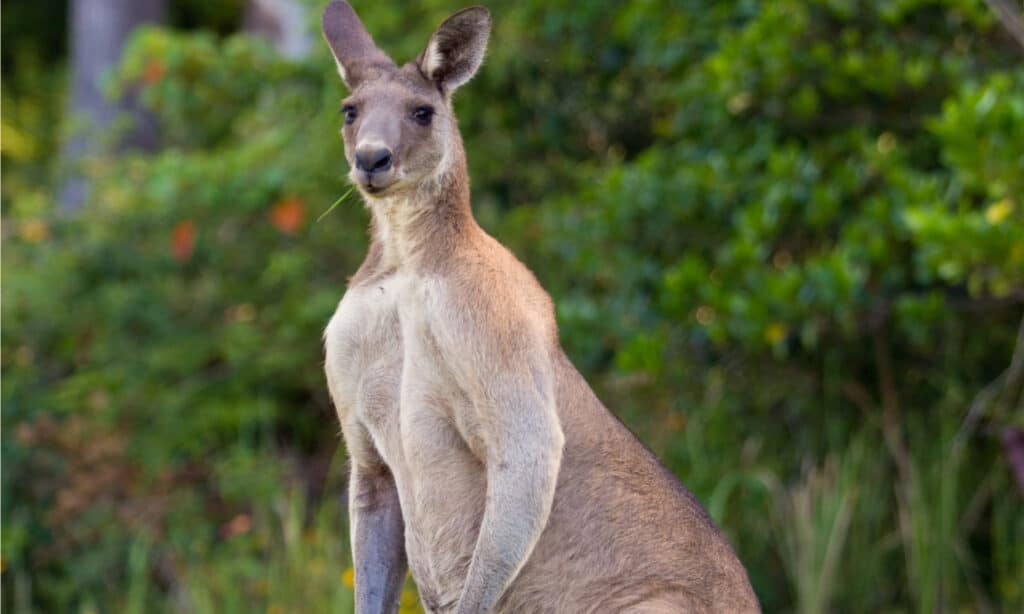
Kangaroos
are preyed upon by snakes.
©kimonofish/Shutterstock.com
Snakes eat kangaroos, and this is surprising for several reasons. Firstly, kangaroos are large and muscular animals. Secondly, unlike many other mammals, kangaroos can defend themselves in a plethora of ways. For one, they are expert boxers, and some species can run as fast as 70 miles per hour. They are also very good jumpers and can jump as high as 6 feet and cover up to 25 miles with a single jump.
So how exactly do snakes capture kangaroos? Well, many snakes are ambush predators. This means that they camouflage into their surroundings and lie in wait until their prey comes close enough to be bitten. An exceptionally large scrub python could do the job on a young kangaroo, but it’s unlikely they could take on a fully grown male.
Other snakes are large enough to constrict these animals. In 2016, for example, the Daily Mail reported video evidence of a python swallowing a large kangaroo.
Crocodiles
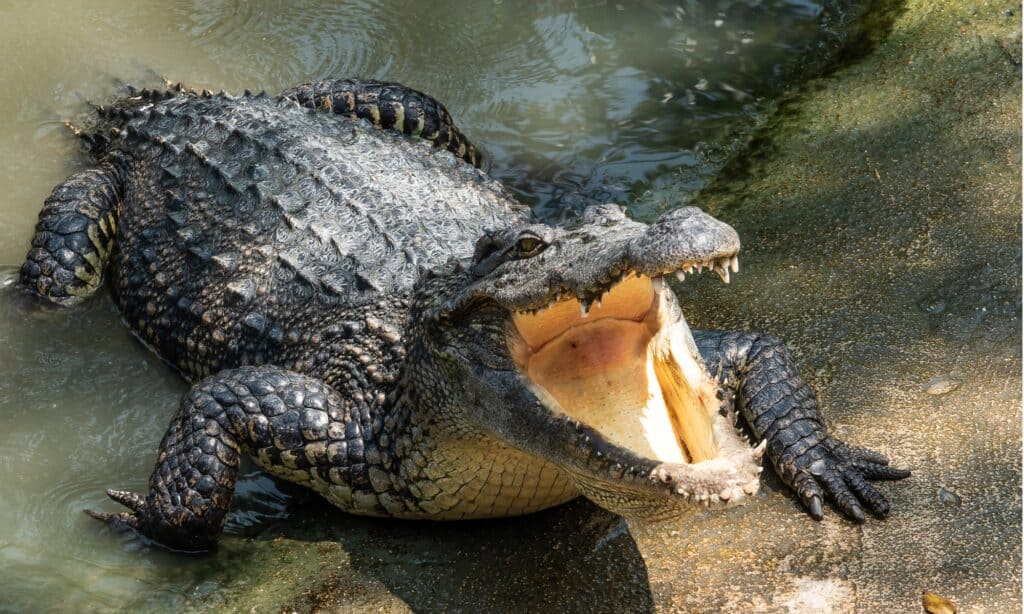
Large snakes successfully hunt crocodiles.
©iStock.com/AppleZoomZoom
Crocodiles are dangerous and ferocious reptiles, but this doesn’t stop snakes from going after them. Of course, only large snakes that can envenom or constrict these animals go for them. Even then, some snakes die trying. Remember that crocodiles are known to have the strongest bite of any animal.
According to a BBC News report in 2015, a large Burmese python tried to swallow a 3.2ft crocodile but died in the process. However, snakes are often successful in killing crocodiles.
Themselves
No, we do not mean other snakes; we mean themselves. Snakes often eat their own bodies! This usually happens when snakes get disoriented and bite their own tails. They proceed to swallow their own tails and do not notice until their stomach acids start to break down their own tails.
Of course, this causes immense pain and makes the snake frantic. They try to fight and end up damaging their internal organs and killing themselves. Greeks discovered this phenomenon centuries ago and made it a symbol that they named ouroboros. It is represented by a serpent of ancient Greece and Egypt with its tail in its mouth.
Snakes often bite themselves by accident, but more often than not, their injuries aren’t fatal. This is because snakes have a level of resistance to their venom. However, snakes can indeed kill themselves by biting themselves.
The photo featured at the top of this post is © Ken Griffiths/Shutterstock.com
Discover the "Monster" Snake 5X Bigger than an Anaconda
Every day A-Z Animals sends out some of the most incredible facts in the world from our free newsletter. Want to discover the 10 most beautiful snakes in the world, a "snake island" where you're never more than 3 feet from danger, or a "monster" snake 5X larger than an anaconda? Then sign up right now and you'll start receiving our daily newsletter absolutely free.
Thank you for reading! Have some feedback for us? Contact the AZ Animals editorial team.







